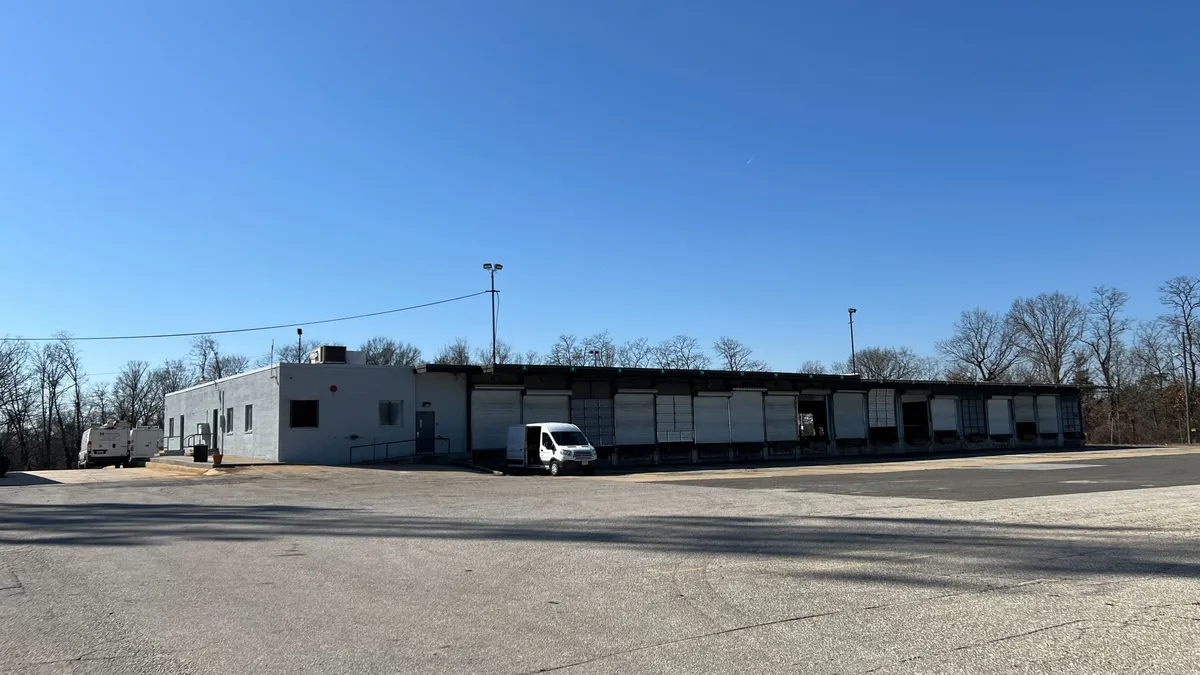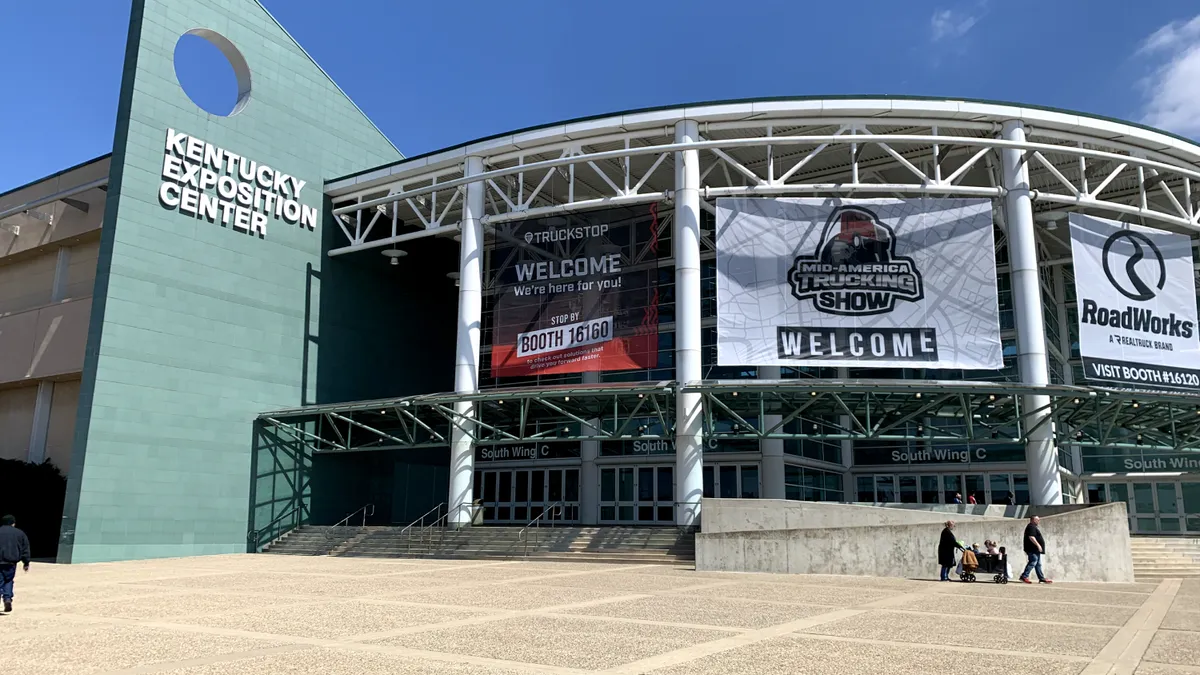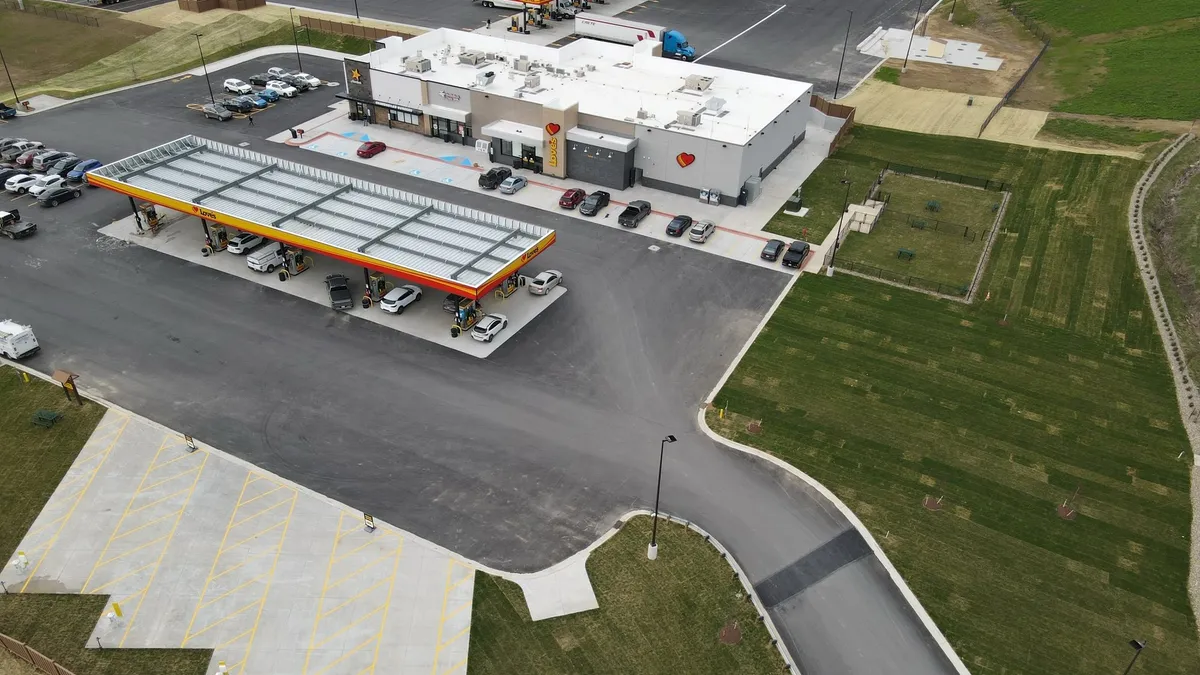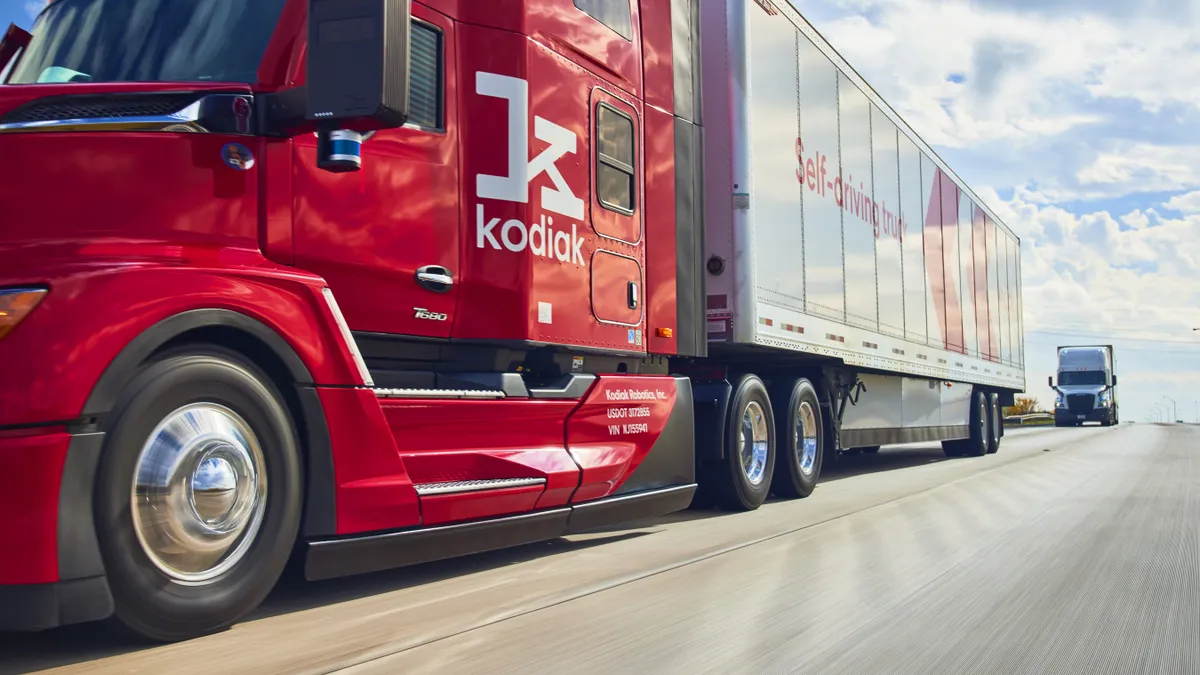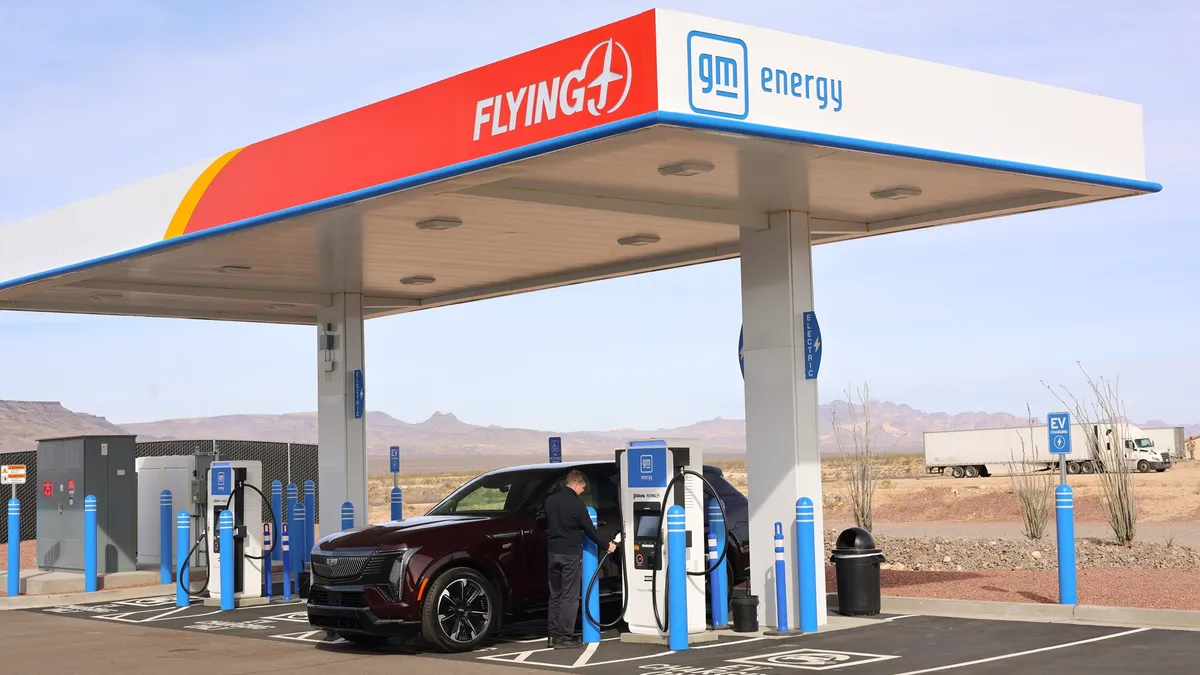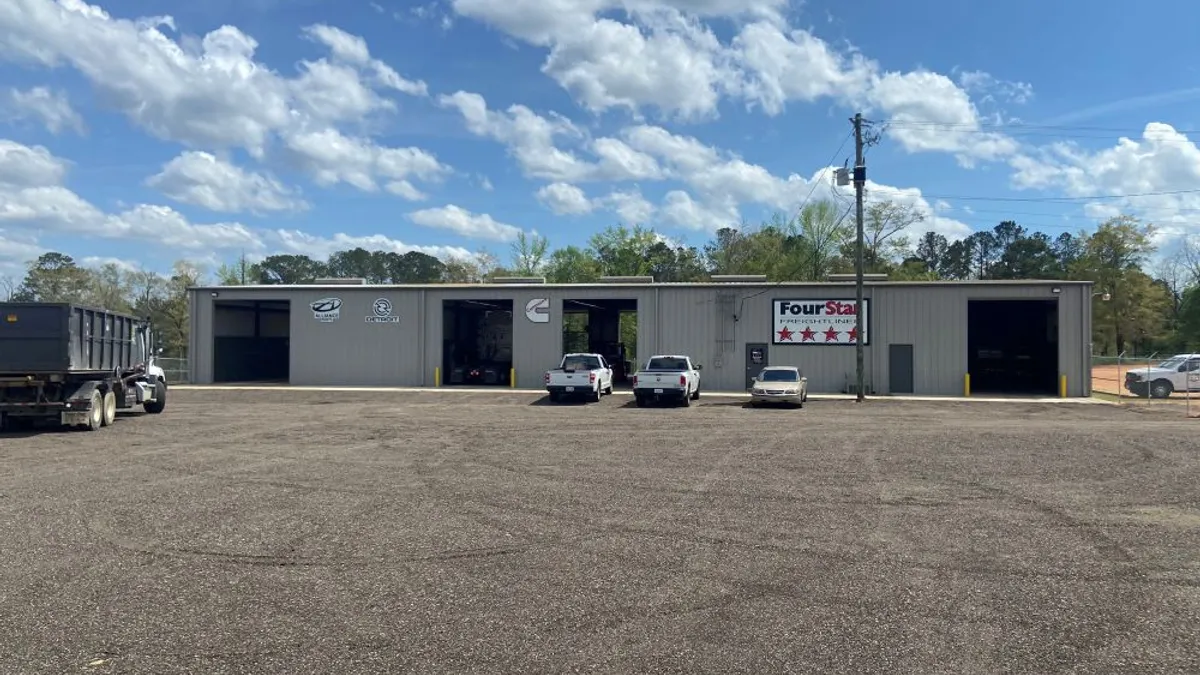XPO CEO Mario Harik considers the 28 former Yellow Corp. trucking terminals his company acquired in last year’s bankruptcy auction “the crown jewels” of Yellow’s network.

The Greenwich, Connecticut-based company prioritized properties’ size and the scarcity of nearby terminals or land in its $870 million in purchases.
“The 28 we got were effectively the highest priority ones that we had in the network, but each had a different reason,” Harik told Trucking Dive in an interview last week.
XPO, Estes Express Lines and Saia each spent hundreds of millions of dollars adding the defunct competitor’s terminals to their networks. But not all the big LTLs saw the same value: Old Dominion Freight Line, which initially put down a $1.5 billion stalking horse bid, ended up pulling out of the auction.
In interviews and Q4 earnings calls, several trucking company leaders discussed their strategies and some of their most cherished property acquisitions in the biggest bankruptcy in the industry’s history.
XPO adds key facilities, efficiency benefits
XPO paid about $300,000 per door across the more than two dozen truck terminals it acquired from Yellow, according to Harik.
In the virtual interview, he pulled up a map of Nashville and envisioned XPO’s new, larger terminal west of the city serving the Tennessee capital’s growing population — and better accommodating the carrier’s breakbulk operation in the interstate shipping hub.
“The number one benefit we're going to get is actually an efficiency benefit,” Harik said. “In that market, we don't have to go hire new people day one. All that we have to do is relocate the existing breakbulk operation to this much larger facility in West Nashville.”
Harik also touted XPO’s terminal purchases in Columbus, Ohio; Carlisle, Pennsylvania; and Las Vegas as highly coveted items in the auction, which generated nearly $2 billion to repay the Treasury and Yellow’s other creditors.
“They are service centers that every LTL carrier put a lot of value on,” he said.
Estes invests along the Canada border, elsewhere
Estes bolstered its U.S.-Canada cross-border presence with facilities in Detroit; Buffalo, New York; and Burlington, Vermont, as well as a lease in Tacoma, Washington, President and COO Webb Estes told Trucking Dive in an interview.

Among its $285 million in winning bids, it spent more than $10 million per terminal on the five most expensive sites, in Indianapolis; Olive Branch, Mississippi; Romulus, Michigan; Charlotte, North Carolina; and Boynton Beach, Florida.
“We bought a lot of the strategic ones we needed,” Estes said. “But we also tried to do it efficiently, from a cost perspective. I didn’t want to just spend forever on it.”
Webb Estes, who has never been to Hawaii, joked in an interview that the terminal Estes acquired in Waipahu could be an opportunity to visit.
“Pretty excited for the opportunity for us to actually have boots on the ground there and feel like that will be a differentiator for us,” Estes said.
Saia sees a once-in-a-century opportunity
The roughly $250 million Saia spent on Yellow terminals will make up just a quarter of its billion-dollar capex budget for this year, EVP and CFO Doug Col said on an earnings call.
“Saia will approach record levels of capital investment in 2024, but at no time in the company's 100-year history have we had a similar opportunity,” CEO Fritz Holzgrefe told analysts.
The Johns Creek, Georgia-based carrier acquired 17 terminals and 11 leases in the auction, including sites in Laredo, Texas; Trenton, New Jersey; Cheyenne, Wyoming; and St. George, Utah.
The facility openings will be spread out over the year following necessary repairs, Holzgrefe said.
“Some of the facilities that we recently acquired ... require some level of investment to meet the standard that we expect,” he said.
Knight-Swift uses Yellow exit to build out nascent LTL
Knight-Swift Transportation Holdings took the chance to grow the network of its LTL operation, which it launched three years ago, with several batches of property acquisitions.
The Phoenix-based transportation behemoth bought 13 terminals, then a pair of leases in Washington and Montana, then another 10 leases from Yellow in the bankruptcy proceedings.
With its first batch of bids, the truckload giant paid an average of less than $4 million per terminal to acquire properties across nine states.
“Filling out a super-regional network in the short term and creating a national network in the long term will allow us to participate in more freight and enable us to find opportunities to further support our existing truckload customers with LTL capacity,” CEO and President David Jackson said on an earnings call.
ArcBest gets positioned on ‘things that matter most’
While it didn’t bid as much as some of its competitors, ArcBest viewed the Yellow real estate auction as a “once-in-a-lifetime sort of deal,” Chairman, President and CEO Judy McReynolds told Trucking Dive in an interview.

The ABF Freight parent company spent $30 million to buy properties in Des Moines, Iowa; Columbus, Ohio; and Springdale, Arkansas. It acquired a lease in Bethlehem, Pennsylvania, for $7.6 million.
“You need to be sure you get positioned well on the things that matter most,” McReynolds said.
ArcBest’s strategy in the auction was to add properties to meet demand “in a way that makes sense,” she said.
“These are long-term decisions, and so you want them to be good long-term decisions,” McReynolds said. “It's always exciting to have more options.”
Old Dominion cites cost in backing out of auction
The soaring valuations prompted the Thomasville, North Carolina-based LTL leader’s exit, Old Dominion EVP and CFO Adam Satterfield said during an earnings call.
“We felt like, just given the cost, that – you can see now in hindsight that it was better for us to just maintain control,” Satterfield said.
“Our network is in a great spot as it is, but we continue to have the ability to control when we add to the network in time, where we decide to add the facilities, and how exactly we want to build them,” he added.



